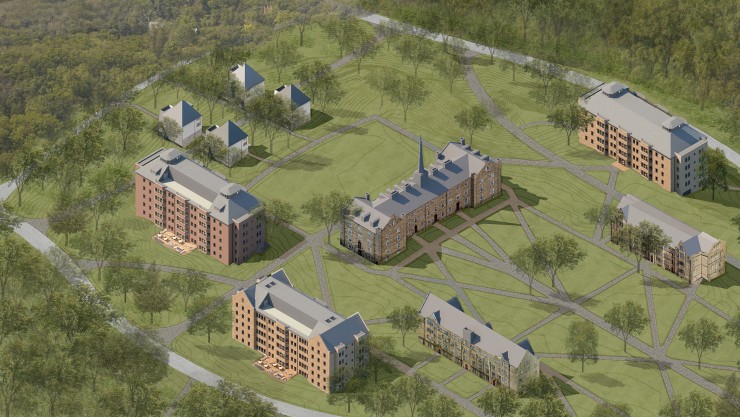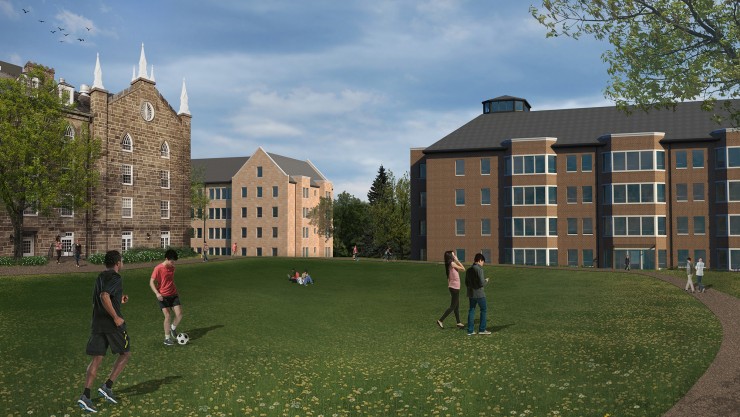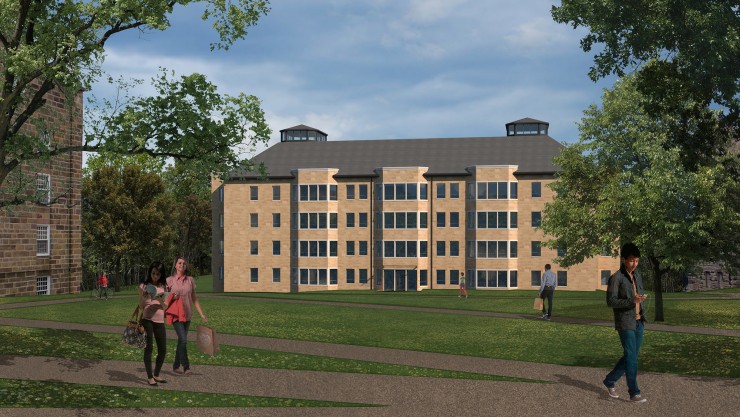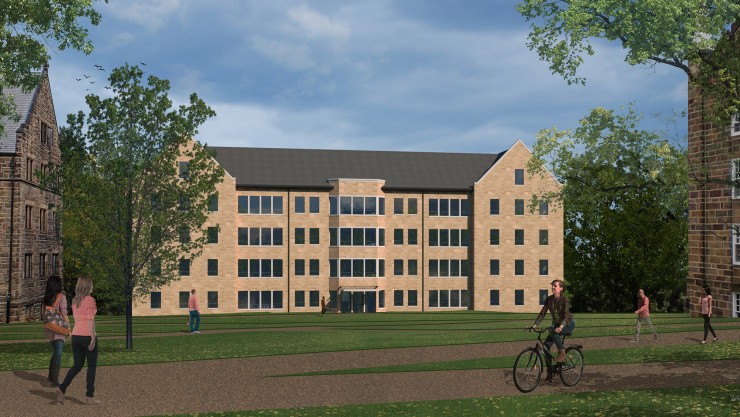Following a semester unlike any other in history, Kenyon has received a once-in-a-generation gift that will help shape its future. An anonymous donor has committed $100 million to fund construction of three apartment-style residence halls on South Campus, each with room for just over 100 students. The three new buildings will complement iconic Old Kenyon, Hanna and Leonard residence halls and will be designed to last a century or more.
Kenyon is one of only 10 national liberal arts colleges to have ever received a nine-figure gift.
The funding of the new residences allows Kenyon and its loyal supporters to renew focus on growing the endowment for scholarships and financial aid, as well as continued support for annual funds, while fulfilling a critical strategic goal of improving housing. “To receive this record-breaking gift during a pandemic that is still gripping our country and disrupting our academic year speaks volumes about the strength of Kenyon’s future,” said President Sean Decatur.
With this gift we are doubling down on the residential experience that is at the heart of a Kenyon education, the intrinsic value of which distancing and remote learning has only made more clear.
The College is also announcing today that, separate from the gift, it has met the $300 million goal of the Our Path Forward campaign — five months ahead of schedule — thanks to the individual contributions of more than 17,947 alumni, parents and friends.
Building on this incredible momentum, the campaign will continue until June 30, 2024 as Our Path Forward to the Bicentennial, with a new goal of $500 million, including more than $200 million for scholarships and aid. Growing the size of Kenyon’s endowment, which at $419 million is modest compared to peer schools, was at the center of the Our Path Forward campaign when its public phase was launched in 2018.
“Raising our sights and achieving our new goal of $500 million will secure our place in the future by solidifying our financial position, allowing us to admit more talented and diverse students, regardless of need,” said Jim Parker ’81 P’10, campaign tri-chair.
Apartment-style suites on South Campus were identified as the most desirable option in a comprehensive housing study conducted by the consulting firm Brailsford & Dunlavey last year. The consultants noted that in their survey of Kenyon students, the nearly 50% response rate was the highest among the more than 300 colleges and universities for whom they’ve performed similar work.
Meredith Harper Bonham ’92, vice president for student affairs, said the College has known anecdotally that students want more independent housing in their junior and senior years, and that South Campus is a desirable location. “The study helped to confirm our sense of student preferences. It also reinforced Kenyon’s developmental approach to student housing, beginning with an emphasis on community-building and enhancing a sense of belonging among first-year students, and ending with apartment-style units where students can enjoy living with their friends,” she said.
The location of new buildings behind and offset with Old Kenyon was identified in the most recent campus Master Plan in 2014, which also calls for the eventual demolition of the New Apartments, which were constructed nearly 50 years ago. Bushnell and Manning Halls behind Old Kenyon will also be taken down to allow for construction of the new residences, although at this time only the east building, Bushnell, will be replaced. The Taft Cottages behind Old Kenyon will remain.
The new buildings will be built to LEED gold standards for sustainability and support the College’s commitment to carbon neutrality by 2040. Construction is scheduled to begin following the conclusion of the academic year in spring of 2023, after the completion of work on the West Quad.
The housing study also proposed a sequence of renovations to existing residences, ranging from paint and flooring to modernization and reconfiguration of bathrooms, through 2037. The first-year areas topped the list, with work possibly starting as soon as this summer.
The net gain of 199 beds on campus following completion of the third building will provide critical swing space to allow for these renovations, said Ian Smith, vice president for facilities, planning and sustainability. “Right now we simply don’t have enough housing on campus to take a residence hall offline for the time needed for a full renovation; the addition of beds will resolve this logistical bottleneck,” he said.
Adding more beds also allows the College to welcome more alumni back for Reunion Weekend while offering modern housing amenities, including private or semi-private bathrooms as well as elevators. The new buildings will be fully ADA compliant and have on-site laundry facilities.
Parker, who has been a member of the Board since 2006, said the need for new housing has been well-established, as reaffirmed by the recent housing study. “Finding funding for housing is a challenge across academia, so to get a gift of $100 million to address this demonstrated need is remarkable,” said Parker.



